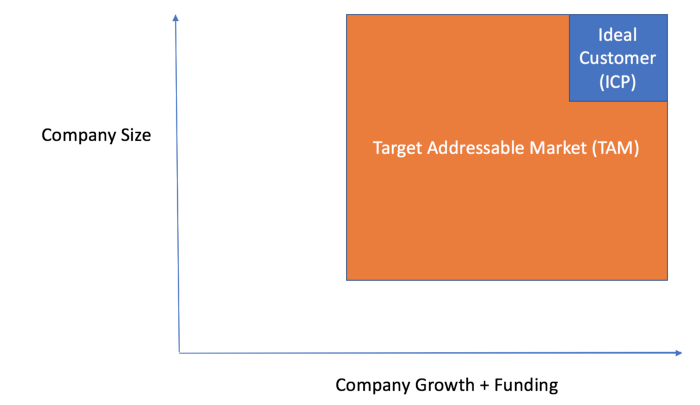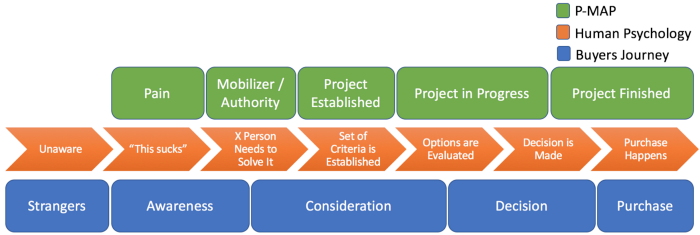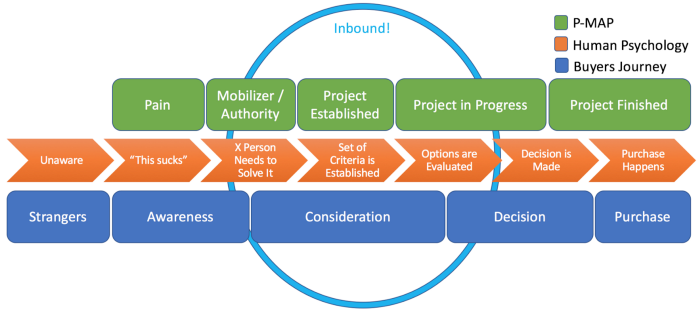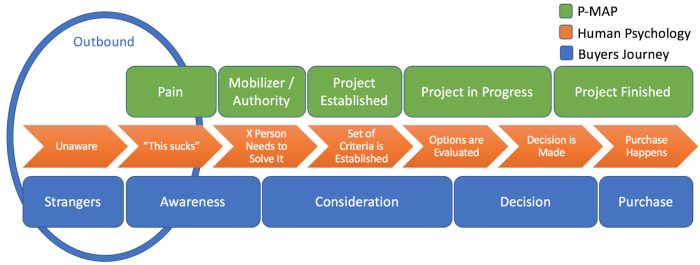In this guide, I will teach you the fundamentals of Lead Qualification for inbound and outbound sales development, and give you actionable steps you can take to maximize your Revenue per Lead.
What Is Lead Qualification?
Lead qualification is the process of using metrics, scoring, and other criteria to ascertain whether or not a given sales prospect fits your ideal customer profile (ICP), and has strong mathematical probability of becoming a long term customer.
Every company is either trying to increase the quantity or the quality of their leads, and many are trying to increase both. Sales and Marketing Alignment is a trending topic and the role of Sales Development has been growing fast.
Outbound SDRs are usually hired to increase the number of leads, when Marketing can’t generate enough of them, while Inbound SDRs are hired to sort through the leads generated by Marketing and find the ones worth sending to the sales team.
Regardless of the source, the goal is to help the Sales Team handle as many Sales Qualified Leads (SQLs) as possible and maximize revenue. Ideally you can create a predictable and scalable Revenue engine, but lead qualification is an area where most companies struggle with, so today we will mark the end of that struggle, just like we did with the SDR to AE handoff.
You can use the table of contents below to navigate through the guide:
- Why Qualifying leads matters
- Understanding the buyer’s journey
- P-MAP and other qualification methods
- The Fundamentals of Qualifying outbound (P-M, from P-MAP)
- The Fundamentals of Qualifying inbound (P-MAP)
- Conclusion
Why Lead Qualification Matters
Every great founder and VC knows that to win in the world of SaaS, you need to maximize your Lead Velocity (Tom Tunguz, Jason Lemkin), which means that the number of Qualified Leads per month your company generates should be increasing constantly.
The key word is “Qualified”, as having too many marketing generated (inbound) leads that aren’t qualified will result in a lot of lost time for the SDRs sifting through the data.
Similarly, unless you have clearly defined criteria for your outbound SDRs, they will pass leads to sales that will waste their time with Demos and Discovery calls that go nowhere.
In short, qualifying leads matters because you only want your Sales Team to be working with companies that have a reasonable chance of buying, otherwise you’d be wasting resources and not generating revenue.
Leads Are Either Qualified or Unqualified. Yet not all Qualified Leads are Equal.
Even though your qualification criteria must binary (either qualified or unqualified, as we covered in the SDR to AE Handoff article), each leads sits in a wide spectrum of qualification. Some leads are a perfect fit, others are a good fit – yet both are qualified.
As an example, imagine you sell to companies that have a minimum of 50+ employees, with 3+ salespeople, and you sell to various industries but your best and happiest customers are in California, growing very fast, and work in tech.
Lead Example #1 – A company in North Carolina with 52 employees and 4 sales reps growing a 4% per year would be a qualified lead.
Lead Example #2 – A tech company with 5,000 employees, 1,000 sales reps based in California that just raised $300 Million in funding and is growing 100% per year is also a qualified lead.
The difference between those is that the first lead falls within your Target Addressable Market (TAM) – which could be defined as any company that passes the minimum requirement that makes it worth it for a sales rep to talk to.
The second one falls within your Ideal Customer Profile (ICP), which constitutes a small sub-segment of the market that tends to be your best and happiest customer.
Your ICP is more likely to buy, more quickly, and more likely to pick you over all other competitors. The value of this ICP lead is MUCH higher than a TAM lead.

The biggest struggle for most companies is that they don’t understand that Inbound and Outbound leads are very different. Marketing will celebrate when any TAM lead comes inbound. While the SDR team should focus solely on contacting ICP companies.
To understand this more in depth we need to dive deeper into human psychology, The Buyer’s Journey and P-MAP or other Qualification criteria.
Understanding the Buyer’s Journey (skim through)
HubSpot pioneered the idea of the Buyer’s Journey, a customer-centric approach to selling, where we need to understand where the customer stands and what we need to do to help them move to the next step so that they can buy our solution.
At the same time, as sellers, we need to qualify and protect our Sales Team’s time to increase Sales Velocity. Therefore we need to combine the buyer’s journey, with our qualification criteria, and determine if a lead is worth pursuing.
HubSpot only has 3 stages, but I believe that in the world of Account Based Everything and big-ticket items, we must think of the Buyer’s Journey as 5 Stages, which I explain below:

Stage 1 – Strangers
This stage constitutes the majority of the world for a startup. These are all the people and companies out there, who have no idea who you are.
For example: If you’ve never heard of AltiSales, you’re in the stranger stage for us.
Stage 2 – Awareness
Awareness has two criteria:
Are they aware of the problem or need? Does this potential client understand that the costs of not solving this problem is high, so much so, that they decide they will do something about it.
For example: When you realize that you’ve grown from 3 to 10 customers and now you need a billing solution to stay organized.
Are they aware that your solution exists? Does this client recognize your name, and at least a basic understanding of what you do?
For example: I know Coca-Cola can help me when I’m thirsty, I know a drill can help me with holes in the wall to hang my TV, I know IKEA has some dresser where I can store clothes.
Stage 3 – Consideration
In the consideration stage, buyers are looking for a few things:
- Define the criteria I need to solve this problem at my company.
- How will I weight those criteria against one another?
- Who else can help me solve this problem?
- How is this solution different?
For example: When I was considering a car, I knew I wanted a small SUV, gas efficient, safe, brand new, Bluetooth enabled music, solar rooftop, electronic seats and windows.
Note that some criteria is specific (electric seats), other is functional (Bluetooth enabled music), and other quite broad (safe).
A good salesperson will be able to dive deeper into the requirements and hopefully show this buyer the cars that have electric seats, show him all types of cars that connect to music in different ways (maybe one already has Spotify as a car App, others have auxiliary cords, others Bluetooth, etc), and explain how these cars are safe (breaks quickly, lots of airbags, movement sensors, proximity sensors, etc).
The scope of this blog won’t cover the process of how a sales representative should do this, we are for now just interested in the buyer’s requirements.
Stage 4 – Decision
The decision stage is simple. Here’s where all the stakeholders get together to evaluate the options according to the defined criteria, and decide which options they prefer.
This should map pretty well to their perceived ability of your product to meet their requirements and needs (discovered during their consideration stage, “discovery call” anyone?), while also being cost-effective and lowering their risk of failure.
If you were able to ask the right questions in the consideration stage, their decision shouldn’t be a surprise most of the time.
Stage 5 – Purchase
For big ticket items, buying is not as simple as taking out a credit card and purchasing (like you would with a drink, or a snack). The process is similar to buying a car or a house where you need to talk to your family (multiple stakeholders), get some financial approval or loan (aka wife/husband, finance department and procurement).
Finally you get a signature or receive payment! There you go, you completed the last stage.
How Does That Help Me?
Now that you understand that your company needs to protect your Sales Rep’s time and you understand how a company or an individual go through a purchasing decision, you just need to understand how you will qualify each lead, and you’re going to easily improve your Revenue per Lead.
P-MAP and other Lead Qualification Methods
There are a lot of qualification methods. The oldest one most people know is BANT, which stands for (Budget, Authority, Need, Timeline).
However, other sales methodologies such as MEDDIC (Metrics, Economic Buyer, Decision Criteria, Decision Process, Identify Pain, Champion) have also become popular.
You can use any of them, but my favorite is P-MAP. If you’ve never heard of it, here’s what it stands for:
P – Pain/Need -> Similar to the Awareness Stage the question is “Is this important enough to do something about it?”
M – Mobilizer -> Is the person we are talking to able to evangelize our solution and help us move the needle to win the deal
A – Authority -> Do we have access to the person, or at least some of the people in the buying committee, those who will ultimately make the decision?
P – Project -> Do they have a project around this initiative that is SMART (Specific, Measurable, Attainable, Relevant, Time-bound).
The main reason I like P-MAP is that it follows the same sequence as the Buyer’s Journey through the awareness, consideration, and decision processes.
If you think about it, this is how it’s mapped:

In the next section you will understand why aligning the letters in the name to the Buyer’s Journey is so important.
The Fundamentals of Qualifying Inbound (P-MAP)
Inbound is very different from Outbound. The bad news is that you can’t pre-define who comes knocking on your door for a demo and therefore the Qualification requirements helps us filter out companies that aren’t a good fit.
For inbound, your SDRs are not looking for the perfect fit (ICP), just a good fit (TAM) as we saw before.
Depending how you’ve defined your TAM, most of the work can be done online with simple searches regarding the company size, growth, industry, funding, etc.
Here’s our Buyer’s Journey, P-MAP and Account Psychology again, showing where inbound leads come in:

Inbound leads already have Pain and a Mobilizer (whoever requested the demo) has been assigned to evaluate how to solve their pain. It might be the case that they already have criteria established, and maybe they have already talked extensively with your competitors.
Remember that you are qualifying the Account and not the person. Many times an “intern” or SDR from other company comes inbound asking for a demo to see your solution. You should still take the demo. It might be the CEO who asked them to start the evaluation of this project.
You’ll figure out if this company is worth pursuing according to where in the buyer’s journey they are right now.
Sales Qualification Questions to Ask Your Prospect
You can ask lead qualification questions such as:
- What are you trying to accomplish?
- Why is that important to your company?
- What other options are you looking at?
- What criteria have you established as important?
- Most companies make this a group decision, who else do we need to show this to later on?
- Are you aware of the approximate cost to solve this problem?
- Do you have a deadline to implement this?
Focus on the pain they are expressing, and try to learn as much as possible about their criteria, and decision-making committee.
Most of the time you should go straight into discussing their requirements and criteria and help them buy your product if they fall within your TAM.
However, if they don’t have their requirements pre-set, you can even share the buyer’s journey flowchart and say something like:
“I know that you are past the awareness stage, possibly exploring various solutions. Have you yet defined criteria that you need for this solution? If so, I’d like to focus on those during the demo. If you don’t have requirements yet, I can do a broad overview and tell you how we are different from other solutions and why most companies tend to pick us.”
This is the buyer-centric approach where you take care of the right thing at the right time. Too often, companies miss the mark here.
Many ask “what are your requirements?” when the inbound lead is very early and this is their first demo ever of any solution.
Other times, they try to “pitch” why their solution is better without knowing that the person on the line doesn’t care about these features and has other requirements.
In either case, you’re shooting yourself in the foot.
Similarly, if your company takes too long between a demo request and the demo actually happening, many leads will move through their journey to the decision stage, even before giving you a chance to show your product.
Sometimes the opposite is true as well, if you try to move too quick, and they aren’t ready, you will lose them as you are trying to close them before they even do a proper evaluation. Follow their pace, ask questions about timelines, and requirements, and follow up in a timely manner.
The Fundamentals of Qualifying outbound (P-M, from P-MAP)
When executing on an outbound strategy two things are true:
- You are focusing on your ICP, and therefore you should have better win rates and higher ACVs
- You are most likely reaching out to companies that aren’t even in the awareness stage, and therefore the sales motions early on are different and the sales cycles are longer.
For example, you can’t expect a prospect showing up to an outbound demo to answer “what are you trying to accomplish?” because they don’t even have Pain Awareness.
You should be educating the market on the industry pain, why you think they might be a good fit and all the possible ways to solve this problem (you don’t even mention your solution at first).
Here’s an illustration of where these prospects tend to be:

A few might be slightly further down the funnel and that’s why your prospecting email was compelling. Others might just take a demo with you because you were persistent.
When going outbound, you do want to qualify on the Mobilizer / Authority. Contrary to Inbound where the CEO might have asked the intern to start the evaluation of an active company project, when going outbound, booking a meeting with an intern will lead nowhere, because getting executive buy in when starting so low is borderline impossible.
Ideally you want to talk to someone who can start the initiative and have a discussion about the problem you solve, and find if it would be a good fit for them (most likely it is a good fit, as they are in your ICP). At AltiSales, we refuse to go outbound into anyone with seniority lower than “Director”.
What To Look For As An Outbound SDR
The only things you need to be looking for as an Outbound SDR are possible Pain/Need (P) and Mobilizers (M). If you do your list segmentation and lead research well, as we do at AltiSales, the list assigned to the SDRs constitutes of 99% Mobilizers at companies that fit the ICP, and therefore the first “demo” should be a combination of a quick conversation about the industry and a further exploration of the prospects pain.
Sharing case studies, or testimonials helps the prospect picture themselves in the future with your solution, and encourages them to become your Mobilizer or point you to a Mobilizer who can turn this Pain into a Project.
Another huge benefit of going outbound is that the Project Criteria isn’t defined yet and since you are educating this prospect on the pain, you can help them shape their requirements and further increase your chances of winning the deal.
DO NOT SPRAY & PRAY
A final word of caution for Outbound, is to be conscious of your Account to Demo efficiency. Too many companies decide to blast 10,000 emails to anyone from any target account. Not only will their email servers get blocked, but many customers will be annoyed. Ideally, you can assign an SDR a certain number of accounts per month, and have them book at least 5% of them for demos. Spray and Pray is no longer a valid strategy in 2018.
Remember you are trying to create a scalable and repeatable process, if you burn through 10,000 leads a month with 1-2 SDRs, you’ll be out of Accounts so quickly that your system never scales.
The reason I am writing this blog post on Lead Qualification, is because between October and December 2017, we built a list of 290 Accounts for one of our clients and successfully scheduled 89 meetings with Mobilizers. This efficiency is incredibly important.
It means we can spend 30 months reaching out to our ICP (3000 Accounts) with one SDR or 300 months for our TAM (30,000 Accounts). Now the process becomes scalable and repeatable. We can hire 5 SDRs and get those TAMs done in 6 months. After those 6 months, you can probably go back to the ones you reached out to in month One, as their priorities might have changed or continue to expand to new verticals. Our process was almost infinitely scalable, due to our efficiency.
Sales leaders need to understand that the question of “How many demos can I get per month?” is secondary to “What percentage of my target Accounts can I book this month?”
Recap: 8 Steps To Mastering Lead Qualification
As we’ve learned today, qualifying leads is a difficult struggle for almost every company. I would be shocked if your company is currently not trying to increase the number or the quality of leads it generates.
However before you increase your team size or marketing spend, do the following.
Step 1: Define your Target Addressable Market (TAM) and Ideal Customer Profile (ICP)
Step 2: Build the right outbound lists for your team so that they are talking mostly or only to Buyer Personas (Mobilizers) at companies that fit your ICP.
Step 3: When doing outbound measure your Account to Demo efficiency.
Step 4: Teach your whole Marketing and Sales Organization about P-MAP and why inbound and outbound leads are different and how to handle each demo.
Step 5: Teach your inbound team to ask the right questions to qualify the accounts that come in. They should also understand in depth how your product can meet various requirements.
Step 6: Teach your AEs to handle Outbound demos, to be able to talk about the industry, common challenges, and high-level goals of executives that your product meets.
Step 7: Put together an SLA where the marketing, SDR, and sales team are aligned in the quantity and quality of leads in the TAM and ICP, and make sure you’ve solved the SDR to AE Handoff so that the Death Zone is gone.
Step 8: Get feedback from your AEs regarding the quality of the meetings and make sure you are constantly improving your target accounts and Account to demo efficiency.
If you are able to execute on the above, your revenue per lead will skyrocket, and so will your Win Rate and your Outbound Average Deal Size. Finally, don’t be surprised if your Sales Cycle also shrinks as you ask the right questions during the buyers’ journey.
Now go ahead and start executing. If you have further questions, don’t hesitate to contact me on LinkedIn.







